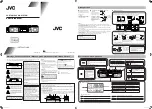
190-00709-05 Rev. D
Garmin G1000 Pilot’s Guide for the Socata TBM 850/900
19
SYSTEM OVERVIEW
AHRS OPERATION
NOTE:
Refer to the Appendices for specific AHRS alert information.
NOTE:
Aggressive maneuvering while the AHRS is not operating normally can degrade AHRS accuracy.
In addition to using internal sensors, the GRS 77 AHRS uses GPS information, magnetic field data and air
data to assist in attitude/heading calculations. In normal mode, the AHRS relies upon GPS and magnetic
field measurements. If either of these external measurements is unavailable or invalid, the AHRS uses air
data information for attitude determination. Four AHRS modes of operation are available (see Figure 1-13)
and depend upon the combination of available sensor inputs. Loss of air data, GPS, or magnetometer sensor
inputs is communicated to the pilot by message advisory alerts.
The AHRS (GRS 77) corrects for shifts and variations in the Earth’s magnetic field by applying the Magnetic
Field Variation Database. The Magnetic Field Variation Database is derived from the International Geomagnetic
Reference Field (IGRF). The IGRF is a mathematical model that describes the Earth’s main magnetic field
and its annual rate of change. The database is updated approximately every 5 years. See the Appendices for
information on updating the Magnetic Field Variation Database. The system will prompt you on startup when
an update is available. Failure to update this database could lead to erroneous heading information being
displayed to the pilot.
Figure 1-13 AHRS Operation
AHRS no-GPS
Mode
AHRS coast-on-gyros
until invalid
AHRS Normal
Mode
AHRS no-Mag
Mode
AHRS no-Mag/
no-Air Mode
Heading Invalid
Heading Invalid
Attitude/Heading Invalid
YES
YES
YES
NO
NO
NO
Air Data Available and Reliable?
Mag Data Available and Reliable?
YES
NO
Mag Data AND Air Data
Available and Reliable?
GPS Data Available and Reliable?
















































